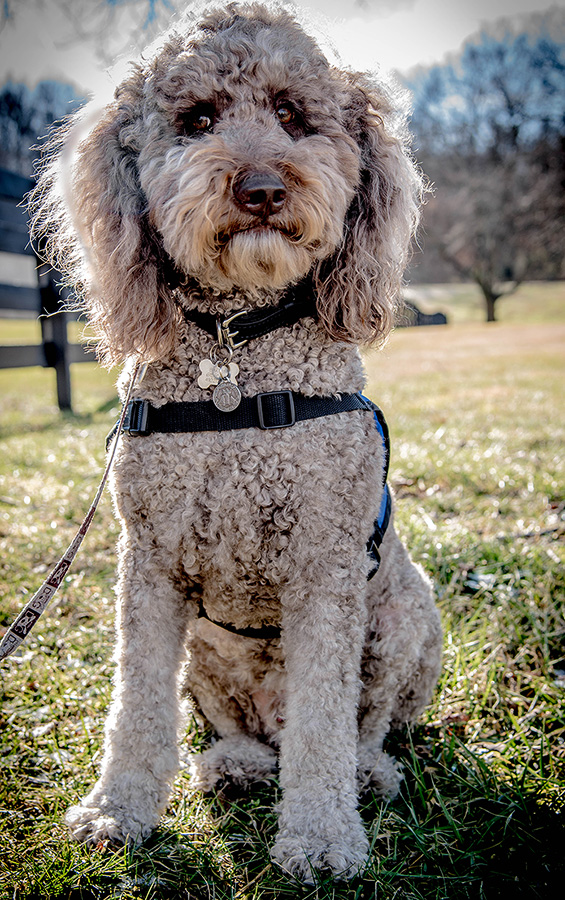Rat Poisoning and Your Dog
September 12, 2021
Rat poison or rodenticide contains harmful chemicals that can affect your pet severely.
Bromethalin rodenticide or rat poison when ingested can cause numerous symptoms ranging from seizures, muscle tremors and reduced movement.
When Do Symptoms Show?
Two to seven days of bromethalin ingestion and up to 4-6 weeks for some dogs. (This timeline makes it imperative that your dog receive treatment before they start showing symptoms!)
Signs and Symptoms
- Short- and long-term loss of appetite
- Muscle tremors
- Vomiting and
- Nose bleeds
- Bleeding gums
- Breathing trouble
Steps to Take if Your Dog Ingested Rat Poison
- Call your vet and Barksdale Labradoodles immediately! Also: petpoisonhelpline.com / 1-800-213-6680.
- Do not wait to see if symptoms develop or to self-treat. Make a note of these details, as your vet will need information to treat your dog.
- Day and time of poison ingestion
- Size, weight and type of dog
- Brand name and manufacturer of the rat poison
- Amount of poison ingested (amount missing from the package)
Prevention
The new variety of poison is not like the old Rat Poison and has come into use in the last year or two. The poisoning is very difficult to treat and quite often fatal.
The best cure is to not let it happen – avoid it in the environment.
Our advice is to call your local Pest Control Company-they usually have pet and kid safe lockboxes with the rat poison.
If you use store bought bait, please ensure your pets cannot get into it.
If conventional methods don’t get rid of the problem, there is a safety box that can be purchased to distribute the poison. And most importantly **after the Rat dies, always dispose it promptly.
Helpful Links for Pet Safe Rat Bait Station
(These are just suggestion and not endorsements by Barksdale Labradoodles)



 The International Labradoodle Association – doing business as the
The International Labradoodle Association – doing business as the 

 In 2012, about 62% of American households included at least one pet, 78 million of which were dogs, and that’s just in the United States. For thousands of years, dogs have lived alongside humans, and as a result of the unique relationship, dogs have learned to read us so well that, like small children, they can actually infer meaning from our gestures and use that to solve problems. Researchers have found that dogs can actually remember and recognize over 150 words, and gestures.
In 2012, about 62% of American households included at least one pet, 78 million of which were dogs, and that’s just in the United States. For thousands of years, dogs have lived alongside humans, and as a result of the unique relationship, dogs have learned to read us so well that, like small children, they can actually infer meaning from our gestures and use that to solve problems. Researchers have found that dogs can actually remember and recognize over 150 words, and gestures.
 Chocolate and black labradoodle puppies are pretty great, but don’t forget about their owners. People who have chocolate labradoodle puppies are pretty amazing, too. Here are just a few of the many reasons why.
Chocolate and black labradoodle puppies are pretty great, but don’t forget about their owners. People who have chocolate labradoodle puppies are pretty amazing, too. Here are just a few of the many reasons why.
 SONY DSC[/caption]Before you start looking at Australian labradoodle puppies for sale, there are a few things you should know about these adorable, furry friends.
SONY DSC[/caption]Before you start looking at Australian labradoodle puppies for sale, there are a few things you should know about these adorable, furry friends.
 If you buy a chocolate labradoodle puppy, there’s a high statistical chance that you will fall in love with it. Don’t believe it? Consider the following.
If you buy a chocolate labradoodle puppy, there’s a high statistical chance that you will fall in love with it. Don’t believe it? Consider the following. Dogs like black labradoodle puppies have been man’s best friend for thousands of years, and in that long stretch of time, humans have learned some pretty amazing things about their canine companions. Here are 101 facts about dogs you never knew you wanted to know.
Dogs like black labradoodle puppies have been man’s best friend for thousands of years, and in that long stretch of time, humans have learned some pretty amazing things about their canine companions. Here are 101 facts about dogs you never knew you wanted to know. The Benefits of Owning a Dog.
The Benefits of Owning a Dog. The Intelligence of Dogs.
The Intelligence of Dogs. Heroic Hounds.
Heroic Hounds. As you check out different Australian labradoodle puppies for sale, you may not think that they’ll eventually one day become a part of your family, but rest assured — they will. The odds are pretty stacked, after all. Here’s why.
As you check out different Australian labradoodle puppies for sale, you may not think that they’ll eventually one day become a part of your family, but rest assured — they will. The odds are pretty stacked, after all. Here’s why. It’s inevitable. Black labradoodle puppies will always wind up becoming parts of the family. How could they not, with their loving eyes, adorable coats, and playfulness? Dogs like black labradoodles become such loved family members, in fact, that a PetFinder.com poll found that 63% of surveyed dog owners will get their doggies presents for Christmas, that four in 10 dog owners will hang stockings for their pets, and that Americans spent about $5 billion each year getting their dogs gifts for the holidays.
It’s inevitable. Black labradoodle puppies will always wind up becoming parts of the family. How could they not, with their loving eyes, adorable coats, and playfulness? Dogs like black labradoodles become such loved family members, in fact, that a PetFinder.com poll found that 63% of surveyed dog owners will get their doggies presents for Christmas, that four in 10 dog owners will hang stockings for their pets, and that Americans spent about $5 billion each year getting their dogs gifts for the holidays.

 Dogs make our lives better. They make us feel better, help us get physically fit, are great for kids, make us more social, help us be healthier, reliever their owners’ stress, and are hardwired to be loyal.
Dogs make our lives better. They make us feel better, help us get physically fit, are great for kids, make us more social, help us be healthier, reliever their owners’ stress, and are hardwired to be loyal.






